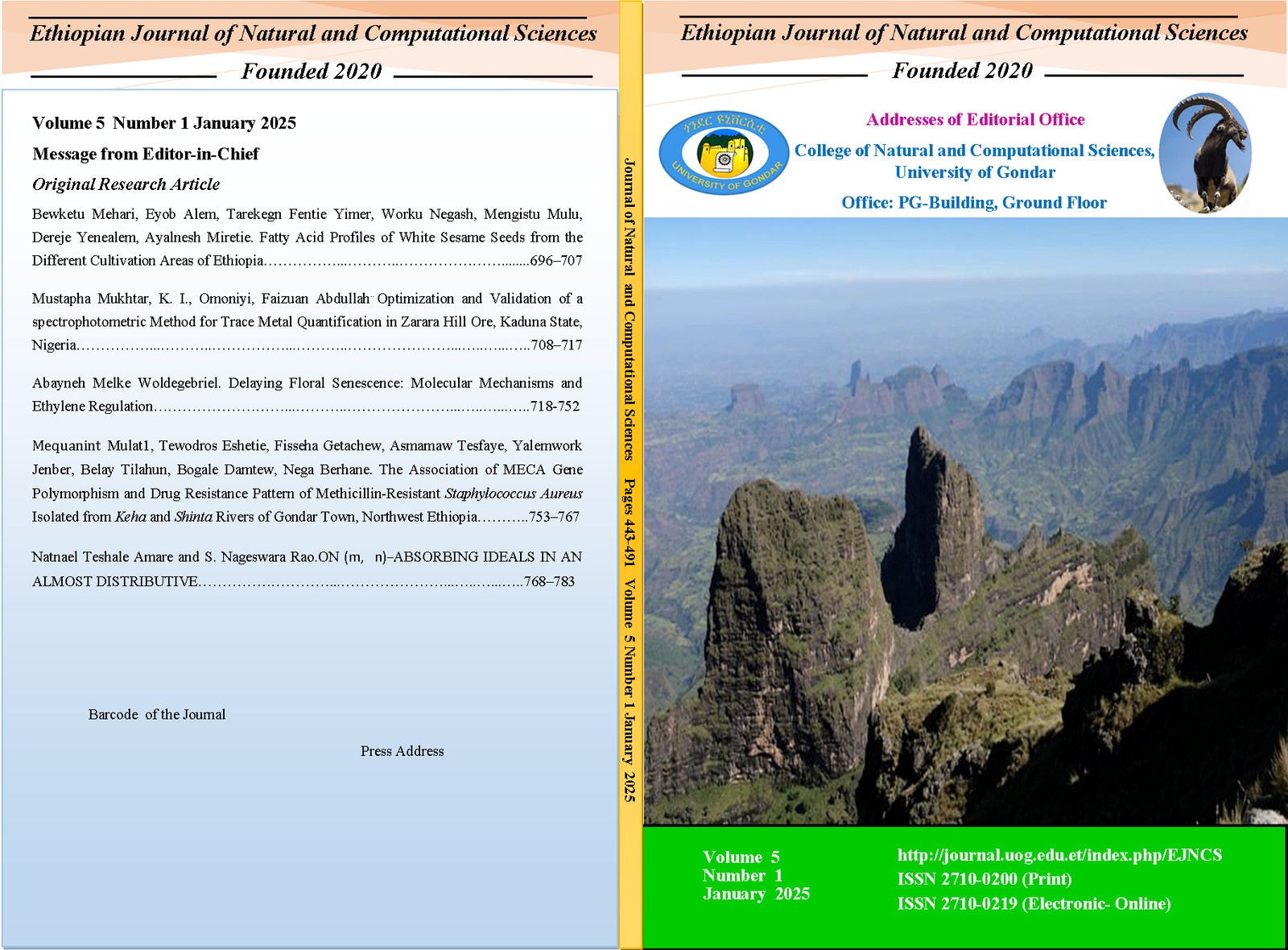The Association of MECA Gene Polymorphism and Drug Resistance Pattern of Methicillin-Resistant Staphylococcus Aureus Isolated from Keha and Shinta Rivers of Gondar Town, Northwest Ethiopia
Keywords:
Antibiotic resistance, Molecular detection, Urban River, Gene polymorphismAbstract
Associated with nosocomial and community-acquired infections, Staphylococcus aureus is a potentially hazardous human bacterium that is alarmingly developing drug resistance. The current study's objective was to assess the association of mecA gene polymorphism and drug resistance pattern of Methicillin-resistant Staphylococcus aureus isolated from Keha and Shinta rivers of Gondar town, Northwest Ethiopia. A purposive sampling technique was used to collect 10 water samples from different sites of the two rivers. Isolation of S. aureus was conducted following standard morphological and biochemical method and subjected to susceptibility testing to 8 antibiotics. Methicillin-resistant Staphylococcus aureus (MRSA) was detected by using the standard PCR method using specific pair of primers. The genomic DNA of the isolates was isolated using a DNA Extraction Kit (GenElutetm., USA). Amplification of mecA gene was done by PCR using a specific primer for the mecA gene. The PCR products were visualized using agarose gelelectrophoresis with 1.5% gel. The results indicated that four (66.7%) Methicillin-Resistant Staphylococcus aureus isolates showed to have 499 bp band size of mecA gene. S. aureus showed a wide range of resistances, with the highest levels observed for ampicillin (100%), penicillin, chloramphenicol, erythromycin, and tetracycline (66.7%). Instead, S. aureus had variable sensitivity to gentamycin (100%) and ciprofloxacin (100%) as well as vancomycin (66.7%). Four (4/6, 66.7 %) S. aureus isolates showed multiple antibiotic-resistant patterns (resistant to four or more antibiotics). The result of this finding concluded that S. aureus isolates with mecA gene developed more resistant to many antibiotics than with mecA negativeisolates. In addition, the present study confirmed that the treated wastewater mixed with the two rivers are potential sources of S. aureus and Methicillin-Resistant Staphylococcus aureus infections, this might be due to the poor wastewater treatment methods followed by several point sources in the study area. In conclusion, this study's findings suggest that the Keha and Shinta Rivers in Gondar Town may be potential receptacles for MRSA, which is capable of infecting both exposed humans and animals.
Downloads
Published
How to Cite
Issue
Section
License
Copyright (c) 2025 Mequanint et al.

This work is licensed under a Creative Commons Attribution-NonCommercial 4.0 International License.

